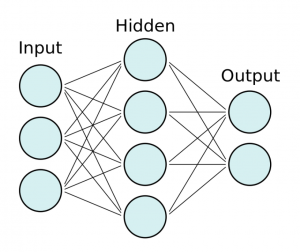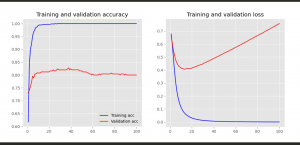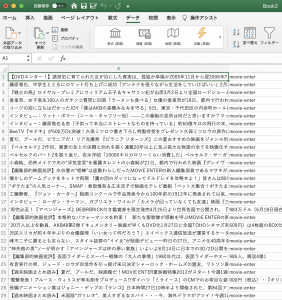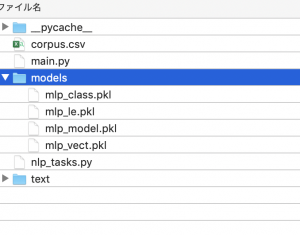### Embeddingとは?
自然言語処理におけるEmbeddingとは、「文や単語、文字など自然言語の構成要素に対して何らかの空間におけるベクトルを与えること」
There are various ways to vectorize text
– Words represented by each word as a vector
– Characters represented by each character as a vector
– N-grams of words/characters represented as a vector
### One-Hot Encoding
taking a vector of the length of the vocabulary with the entry for each word in the corpus
cities = ['London', 'Berlin', 'Berlin', 'New York', 'London'] print(cities)
$ python3 one-hot.py
[‘London’, ‘Berlin’, ‘Berlin’, ‘New York’, ‘London’]
label encode
from sklearn.preprocessing import LabelEncoder cities = ['London', 'Berlin', 'Berlin', 'New York', 'London'] encoder = LabelEncoder() city_labels = encoder.fit_transform(cities) print(city_labels)
$ python3 one-hot.py
[1 0 0 2 1]
Using OneHotEncoder
from sklearn.preprocessing import LabelEncoder from sklearn.preprocessing import OneHotEncoder cities = ['London', 'Berlin', 'Berlin', 'New York', 'London'] encoder = LabelEncoder() city_labels = encoder.fit_transform(cities) encoder = OneHotEncoder(sparse=False) city_labels = city_labels.reshape((5, 1)) array = encoder.fit_transform(city_labels) print(array)
$ python3 one-hot.py
[[0. 1. 0.]
[1. 0. 0.]
[1. 0. 0.]
[0. 0. 1.]
[0. 1. 0.]]
### Word Embeddings
The word embeddings collect more information into fewer dimensions.
To map semantic meaning into a geometric space called embedding space.
famous e.g. “King – Man + Woman = Queen”
from keras.preprocessing.text import Tokenizer // 省略 tokenizer = Tokenizer(num_words=5000) tokenizer.fit_on_texts(sentences_train) X_train = tokenizer.texts_to_sequences(sentences_train) X_test = tokenizer.texts_to_sequences(sentences_test) vocab_size = len(tokenizer.word_index) + 1 # adding 1 because of reserved 0 index print(sentences_train[2]) print(X_train[2])
$ python3 split.py
Of all the dishes, the salmon was the best, but all were great.
[11, 43, 1, 171, 1, 283, 3, 1, 47, 26, 43, 24, 22]
for word in ['the', 'all', 'happy', 'sad']:
print('{}: {}'.format(word, tokenizer.word_index[word]))
the: 1
all: 43
happy: 320
sad: 450
sklearnのCountVectorizerはwordのvector
kerasのTokenizerはwordのvalues
pad_sequences
from keras.preprocessing.sequence import pad_sequences maxlen = 100 X_train = pad_sequences(X_train, padding='post', maxlen=maxlen) X_test = pad_sequences(X_test, padding='post', maxlen=maxlen) print(X_train[0, :])
$ python3 split.py
raise TypeError(“sparse matrix length is ambiguous; use getnnz()”
TypeError: sparse matrix length is ambiguous; use getnnz() or shape[0]
何やと。。。






